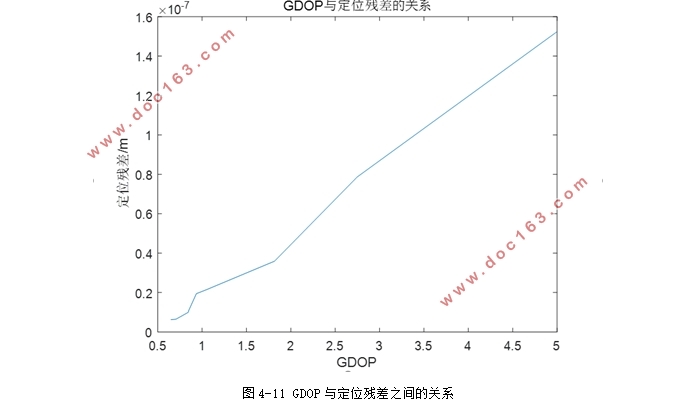基于GNSS的定位算法研究

基于GNSS的定位算法研究(论文12000字)
摘要:全天候、高精度的位置坐标、速率和时间等信息,以及定位、导航和授时的功能都可以由全球卫星导航系统来进行实现。GNSS定位原理是通过一组卫星的伪距、星历、卫星发射时间等观数据,与此同时还要求知道用户钟差。所以,换句话说若你除了要知道经纬度之外还想知道具体的高度的话,因而必须收到四颗卫星的数据才能够精准定位。
本文主要针对GNSS定位的线性化算法进行研究与分析,研究的内容主要是:分析影响定位的因素以及卫星几何分布对定位精度的影响问题,确定卫星位置与定位精度的关系,然后用MATLAB对其进行仿真分析其对定位精度的影响。
关键字:GNSS;卫星导航系统;定位精度;误差分析
Research based on GNSS positioning algorithm
Abstract:All-weather, high-precision position coordinates, velocity and time information, as well as positioning, navigation and timing functions can be implemented by global satellite navigation systems. The principle of GNSS positioning is through a set of satellites such as pseudoranges, ephemeris, and satellite transmission time, and at the same time, it is required to know the user's clock difference. So, in other words, if you want to know the specific height in addition to the latitude and longitude, you must receive data from four satellites to be able to pinpoint. [版权所有:http://DOC163.com]
This paper mainly studies and analyzes the linearization algorithm of GNSS positioning. The main contents of the research are: analyzing the factors affecting the positioning and the influence of satellite geometric distribution on the positioning accuracy, determining the relationship between satellite position and positioning accuracy, and then using MATLAB to Simulation analysis of its impact on positioning accuracy.
Key words:GNSS; Satellite navigation system; positioning accuracy; error analysis
[资料来源:http://Doc163.com]

目 录
第一章 绪论 1
1.1 论文的研究背景和意义 1
1.2 卫星导航系统简介 1
1.2.1 中国的北斗卫星导航系统(BDS) 1
1.2.2 美国的全球导航定位系统(GPS) 1
1.2.3格洛纳斯(GLONASS) 2
1.2.4伽利略系统 2
第二章 GNSS的基本理论 3
2.1 空间坐标系 3
2.2 时间系统 4
2.3 卫星空间位置的计算 5
2.4 使用MATAB仿真卫星坐标的计算 8
第三章 定位解算 9
3.1建立观测方程 9
3.2 线性化 10
3.3位置解算 12
第四章 误差分析 13
4.1 星历误差 13
4.2测距误差 15
4.2.1测量误差的定义与推导 15
4.2.2仿真实验 16
4.3仿真卫星几何分布对定位精度的影响 19
4.3.1精度因子 19
4.3.2仿真实验 20
4.4选星算法的改进 24
第五章 总结与展望 25
参考文献 26
致 谢 27
[来源:http://Doc163.com]
